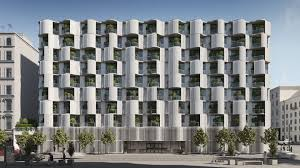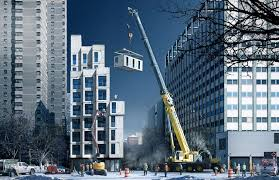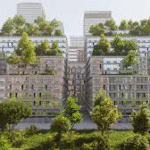Now Reading: “Why Urban Dwellers Are Turning to Micro-Housing Fast 2025”
-
01
“Why Urban Dwellers Are Turning to Micro-Housing Fast 2025”
“Why Urban Dwellers Are Turning to Micro-Housing Fast 2025”

As cities grow more crowded and real estate prices skyrocket, a new trend is reshaping how people live: micro-housing. These compact living spaces, often no bigger than 150 to 400 square feet, are becoming increasingly popular in major urban centers around the world. But can these tiny homes really solve the growing urban space crunch?
What is Micro-Housing?

Micro-housing, also known as micro-apartments or tiny homes, refers to very small residential units designed for one or two people. These homes are often fully equipped with sleeping areas, kitchenettes, and bathrooms, all packed into a cleverly designed space. Some micro-homes also include access to shared facilities like laundry rooms, lounges, or rooftop gardens.
Unlike traditional apartments, micro-homes prioritize space efficiency. Furniture is often built-in or multifunctional—think beds that fold into walls, tables that double as desks, and storage hidden under floors or staircases.
Why Is Micro-Housing Gaining Popularity?

There are several reasons why micro-housing is on the rise, especially in crowded cities like New York, Tokyo, London, and Mumbai.
1. Soaring Housing Costs
One of the biggest drivers of the micro-housing trend is affordability. As rent prices surge in urban areas, many people—especially young professionals and students—are looking for cheaper living options. Micro-apartments usually come at a significantly lower cost than traditional flats, making them an attractive option for those on a tight budget.
2. Limited Urban Space
Cities are running out of space. With more people moving to urban areas, the demand for housing is outpacing supply. Micro-housing allows more units to be built on the same plot of land, helping city planners meet housing needs without expanding city boundaries.
3. Changing Lifestyles
Modern urban dwellers often lead busy lives outside their homes. They may not need a large living space if they spend most of their time working, socializing, or traveling. For many, a small, well-designed home is enough to meet their basic needs.
4. Sustainability and Minimalism
Micro-homes use fewer building materials, consume less energy, and often encourage a minimalist lifestyle. For eco-conscious individuals, this is a major plus. Smaller spaces are easier to heat, cool, and maintain, which reduces the overall carbon footprint.
Where Is Micro-Housing Working?

Several cities have already implemented successful micro-housing projects:
- New York City launched the “My Micro NY” project, the city’s first micro-unit apartment building, in 2016. The apartments range from 260 to 360 square feet and come with built-in storage, large windows, and access to shared community spaces.
- Tokyo has long embraced small-space living due to its high population density. Many Tokyo micro-homes feature high-tech designs and multifunctional furniture.
- Hong Kong has seen the rise of “nano flats,” with some as small as 120 square feet. While controversial, they provide a housing option in one of the world’s most expensive real estate markets.
Challenges of Micro-Housing
Despite its advantages, micro-housing is not a one-size-fits-all solution.
1. Mental Health Concerns
Living in a very small space for extended periods can affect mental well-being. Lack of personal space and natural light can lead to feelings of isolation or claustrophobia, especially if the home is not well-designed.
2. Zoning and Regulations
In many cities, zoning laws and building codes were not designed with micro-housing in mind. This can slow down development and lead to legal issues.
3. Social Inequality
Critics argue that micro-housing could become a “poverty trap,” offering only minimal living conditions to those who can’t afford better options. It’s important that these homes are built with dignity, livability, and access to community services in mind.
The Future of Micro-Housing
Urban planners, architects, and governments are paying close attention to the micro-housing trend. When designed thoughtfully, micro-homes can be an effective tool to address housing shortages, reduce homelessness, and promote sustainable living.
To ensure success, cities must:
- Update building codes and zoning laws
- Invest in high-quality design and materials
- Create supportive community spaces
- Ensure micro-housing remains affordable and livable
Conclusion
Micro-housing is not just a passing trend—it’s a response to real challenges facing modern cities. While it may not replace traditional housing, it offers a smart, sustainable alternative for those willing to embrace a simpler way of living.
As cities continue to grow and evolve, micro-housing could play a key role in shaping the future of urban life—small in size but big in impact.
Read More:- Shobha Realty Launches Its Most Luxurious Project Yet—Full Details Inside 2025






















